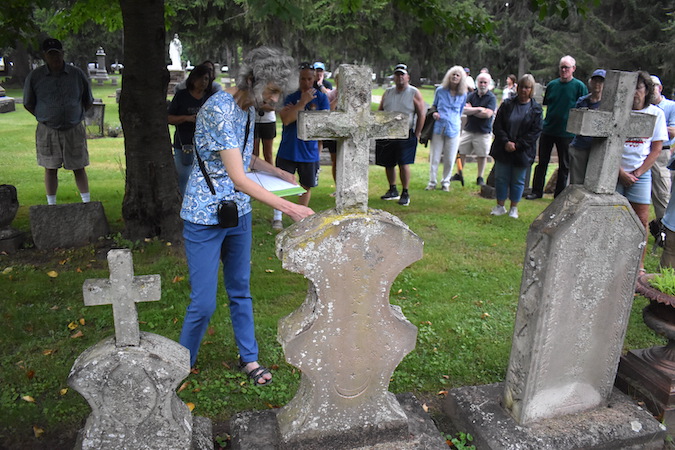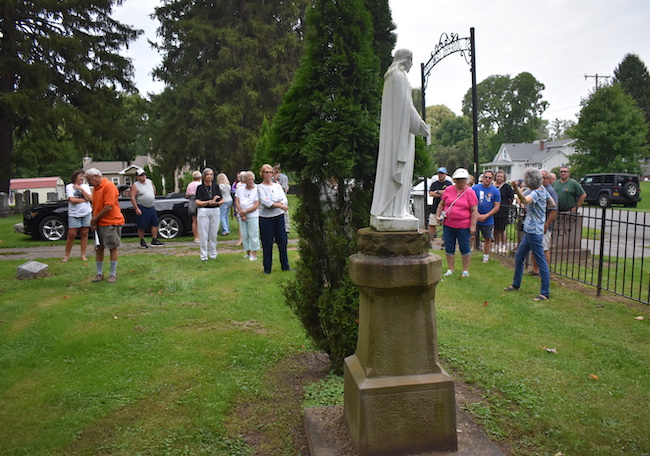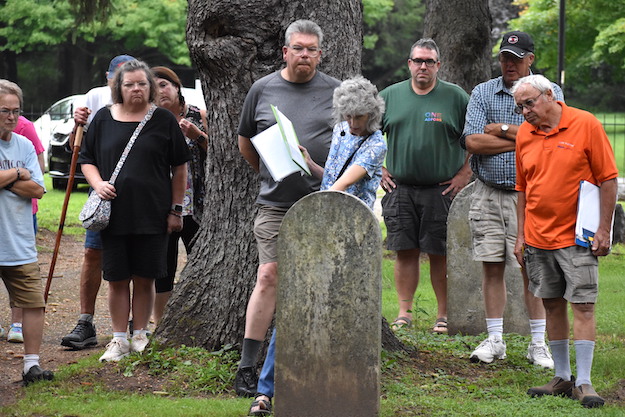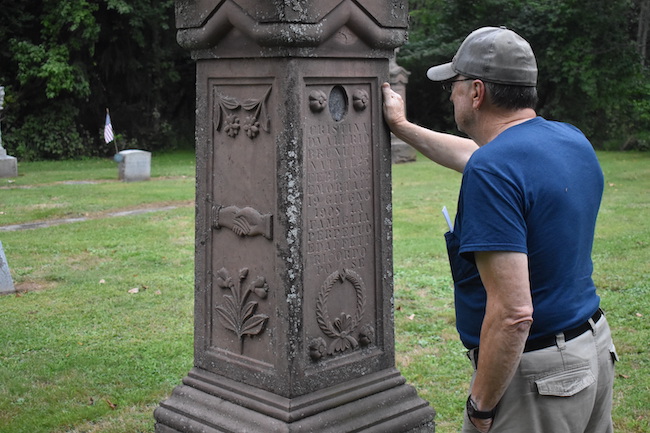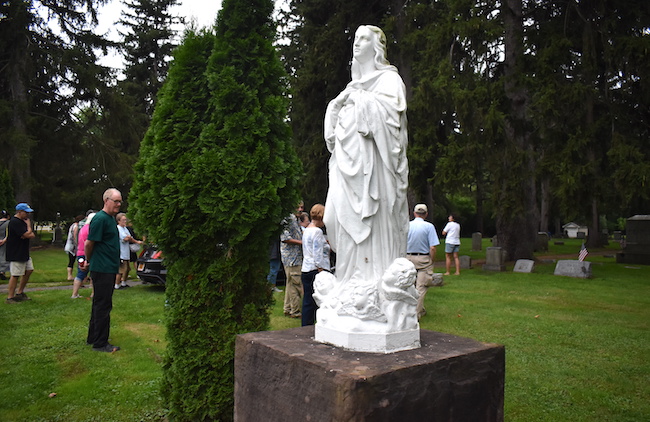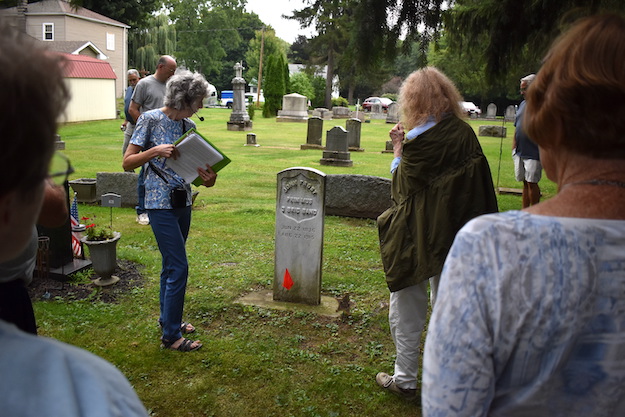Old St. Joseph’s Cemetery tour in Albion features many quarrymen, immigrants
Photos by Tom Rivers
ALBION – Orleans County Historian Catherine Cooper leads a tour of old St. Joseph’s Cemetery on Sunday evening in Albion. Here she stops at the gravesites for the Spada family.
Francesco Spada (1864-1933) and Melania Spada (1871-1951) had 12 children, but only six survived. One of their sons, Peter (Pietro) died in 1907 after jumping off a canal bridge. The loss of their teen-age son devastated Francesco, a quarryman, who made the grave marker out of Medina sandstone. He poured his grief and love into the grave marker.
Francesco later contracted polio, Cooper said.
He came to Orleans County from Alfedena, Italy, a community where many of the quarry artisans lived before coming to work in the Medina sandstone quarries.
Catherine Cooper and a group of about 50 people on the tour are near the entrance of St. Joseph’s Cemetery on Brown Road. The 3-acre cemetery opened in 1873 and has about 1,500 burials.
It closed in the early 1920s when the Catholics opened a new St. Joseph’s cemetery on Route 31. There have been burials in the older cemetery in recent years at some of the family plots.
Catherine Cooper shows the grave stone for Patrick McCabe, an Irish immigrant who died at age 75 in 1874.
St. Joseph’s is the final resting place for many Italian, Irish, German and Polish immigrants who were Catholics.
The cemetery was also known as “Holy Cross Cemetery.” Many of the gravestones have crosses carved in the stone or prominently featured at the top of the grave markers.
Bill Lattin, retired Orleans County historian, noted that many of the gravestones and monuments were made of Medina sandstone. That differs from the sites at Mount Albion Cemetery, where granite and other stone were more sought after. Those families didn’t want a common stone, often used for curbs and street pavers, for grave monuments.
But at St. Joseph’s, where many of the immigrants worked in the quarries, they wanted the Medina sandstone. That stone is what sustained many families in the late 1800s and early 1900s.
Bill Lattin said many of the symbols and images carved into the stone are great examples of folk art. These hands, a man’s at right and woman’s at left, are on a monument written in Italian.
A statue of Mary is set on a big base of Medina sandstone. Two of the statues at the cemetery used to be down the street at the former St. Mary’s Catholic Church. They were moved after the church was closed by the Catholic Diocese in 2007.
Catherine Cooper stops by the grave for Civil War veteran John Frost. A new headstone for Frost was unveiled in 2016 as a project by Albion seventh-graders and former County Historian Matt Ballard.
A review of cemetery records showed Frost did not have a headstone. Frost was a principal musician (chief bugler) for the 33rd New York Infantry and also the 3rd Brigade, 2nd Division of 6th Corps.
The seventh-graders worked with the Veterans Service Agency in Orleans and Niagara counties to secure a headstone for Frost. The marble stone was unveiled on April 30, 2016 during a service at the cemetery.
Frost was born in England on June 22, 1836. At age 13 he left for the United States with his father John and brother Edward on the Northumberland. They arrived in New York City on April 18, 1850 and moved to South Barre. In 1860, Frost was working as a farmer. He enlisted in the Union Army in his mid-20s and served three years.
Frost had the rank of musician, which was just below corporal and just above private. In the Civil War, musicians were relied upon to entertain troops, position troops in battle and stir them on to victory.
Frost, according to the 1880 Census, was married to Margaret Cusack and had five children, ages 14, 11, 9, 6 and 4.
The tour at St. Joseph’s was part of Sunday evening cemetery tours this month, a series planned by the Orleans County Historical Association. The final tour is this Sunday at 6 p.m. at Boxwood Cemetery in Medina. Todd Bensley, the Medina historian, is leading the tour.






























